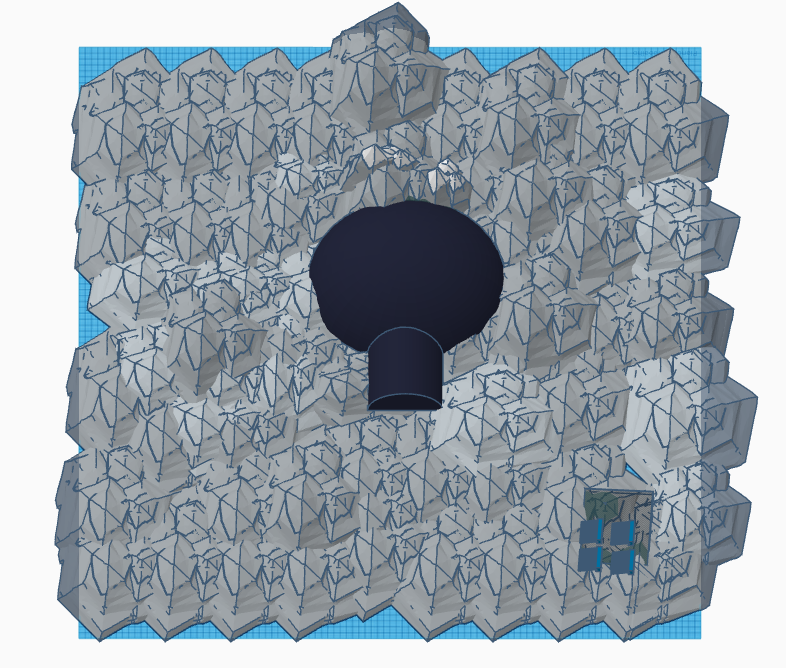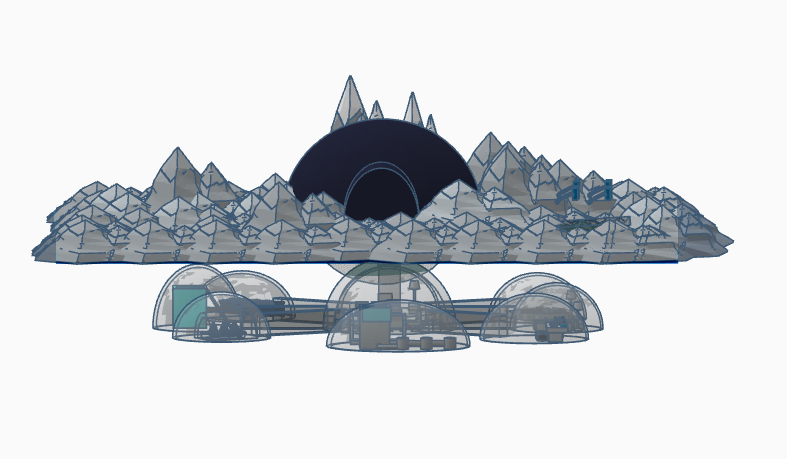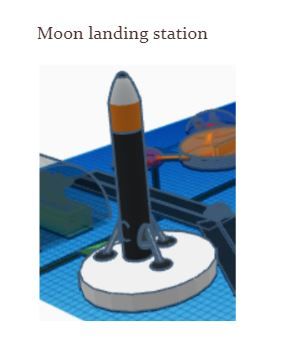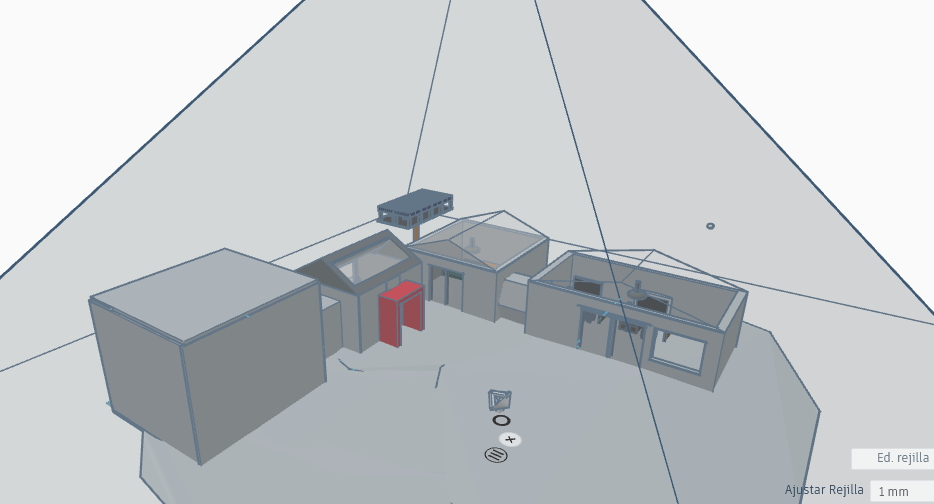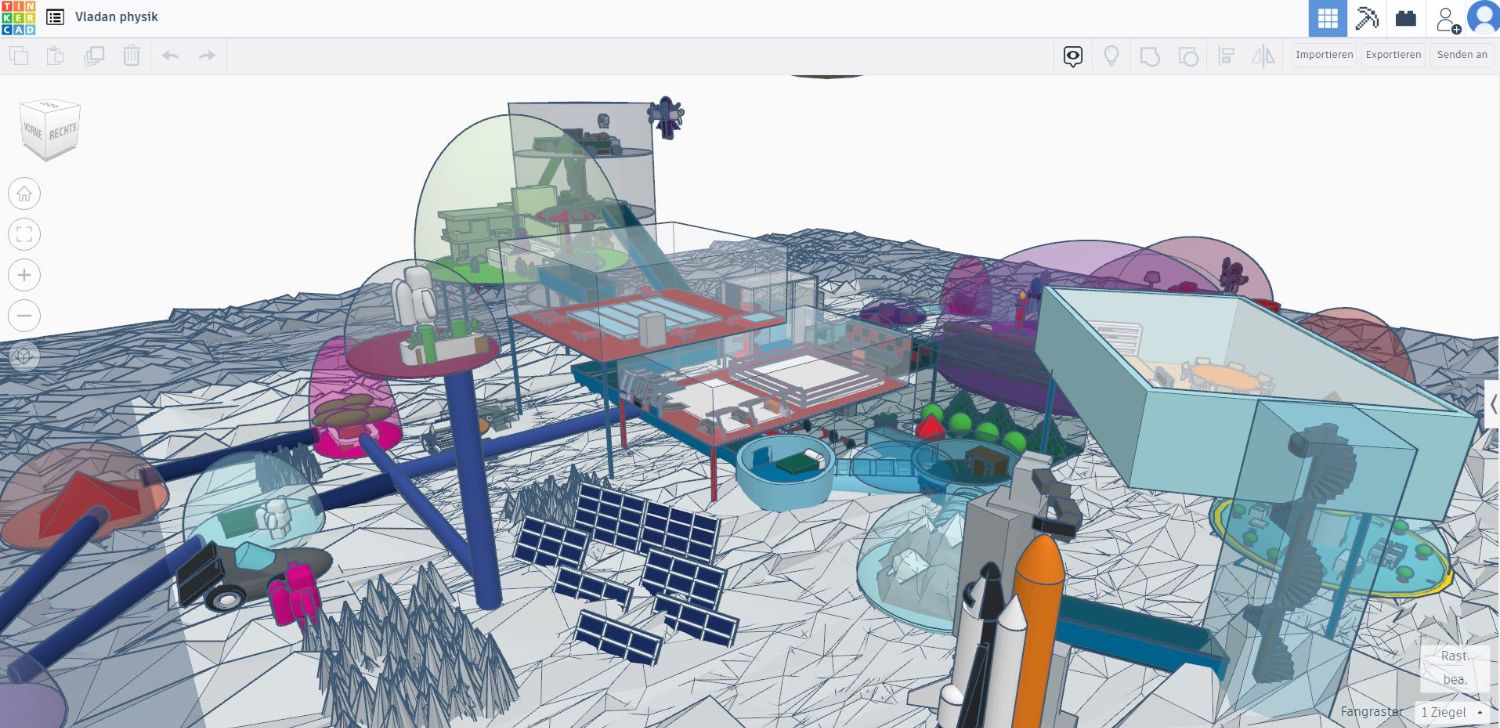Moon Camp Explorers Gallery 2021-2022
In Moon Camp Explorers each team’s mission is to 3D design a complete Moon Camp using Tinkercad. They also have to explain how they will use local resources, protect astronauts from the dangerous of space and describe the living and working facilities.
Team: Moon Homies
Externato Marcelino Champagnat Lisbon Portugal 11 3 / 2
External link for 3d
|
Project description
Our camp would be located at the solar poles. There is a central house connected to several blocks of houses. In the central house, there would be a greenhouse, an aquarium, a gym and other rooms, each one with its own functions (water, air, energy). Within a radius of 10 m we would find our solar panels. The connection between the houses is done with tunnels. |
||||
|
Where do you want to build your Moon Camp?
Close to the lunar poles Why did you choose this location?
We chose this location because it has an amen temperature, not too hot and not too cold. And also because the sun is mostly hitting the ground at the lunar poles which would help us with the farming and the energy. How do you plan to build your Mooncamp? Which materials will you use?
We are planning to build our colony 20 metres beneath the lunar surface and reinforce everything with plain steel and an extra layer of polyethylene on top of the steel layer. To get into our house we will enter a corridor with two metal and polyethylene doors. The first door opens and when it closes air fills the compartment. After passing the second door we take off our suit and get into the lift that takes us to the bedrooms. |
||||
|
Water
|
Food
|
Electricity
|
Air
|
Protection
|
|
The meteorite falls and breaks into pieces and leaves water. We would have a radar that detects meteorites so that the probe can go to the place where it landed, collect the water and bring it back to the camp. In the camp, it is filtered to be consumed or used for other vital functions. In addition to this, we will recycle urine and sweat into drinking water, just as NASA has done, and carry some water from Earth. |
Most of the food that the astronauts would eat would be vegetable and fruit based. In the living quarters there would be a greenhouse and an aquarium with fresh water fish. |
The energy would be taken from the sun’s rays. The solar panels would face the sun, so that whenever we need energy we would have it. They would be 10 metres away but connected to our camp. |
To obtain air on the moon we need to farm Liquidambar styraciflua. When you farm Liquidambo styraciflua tree (fast growing tree), the tree will bear fruit, and with the fruit you can plant more trees. As we plant trees we retain more food, which is good. And as the tree feeds itself with CO2, it releases O2, important to us. On a first stage, we will create this gases artificially until the natural processes could sustain themselves. |
We will build a sun shield made of polyethylene, which is capable of stopping bullets and can be moulded into any shape or form. A very long polyethylene shield 10 to 20 centimetres thick offers protection against meteorites and radiation. To help, the dwellings would be 20 metres underneath the lunar soil because the soil itself is already a protection from meteorites. |
|
Describe a day on the Moon for one of your Moon Camp astronauts
As soon as they woke up, the astronauts got dressed and walked down the corridor until they reached the central house, where they ate in the dining hall. Then some went to the greenhouse where they used the leftovers to fertilize the soil and harvest the food, while others went to the aquarium to feed the fish. Then they all went to an exercise room where they could keep their bodies in shape. After a busy morning, they had lunch, and in the afternoon, some went to work on the the water recycling system, while others checked on the solar power station. Afterwards they went to dinner. If during the day the meteorite alarm sounded they all went to a shelter. |
||||


